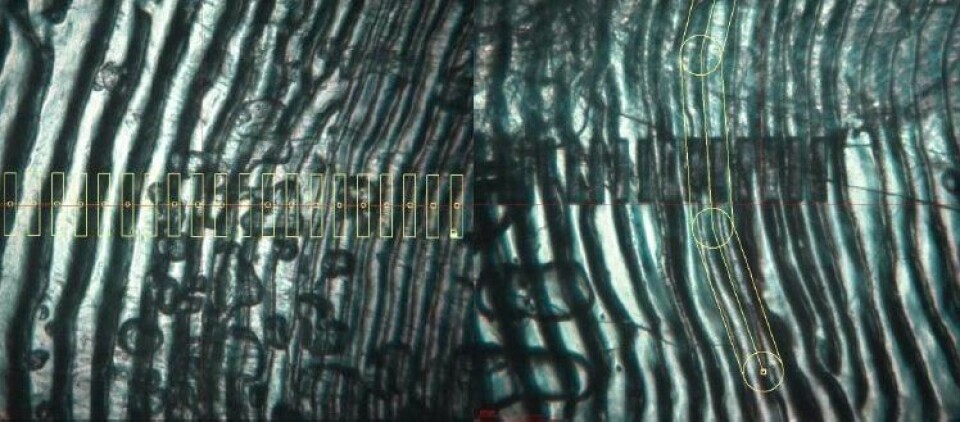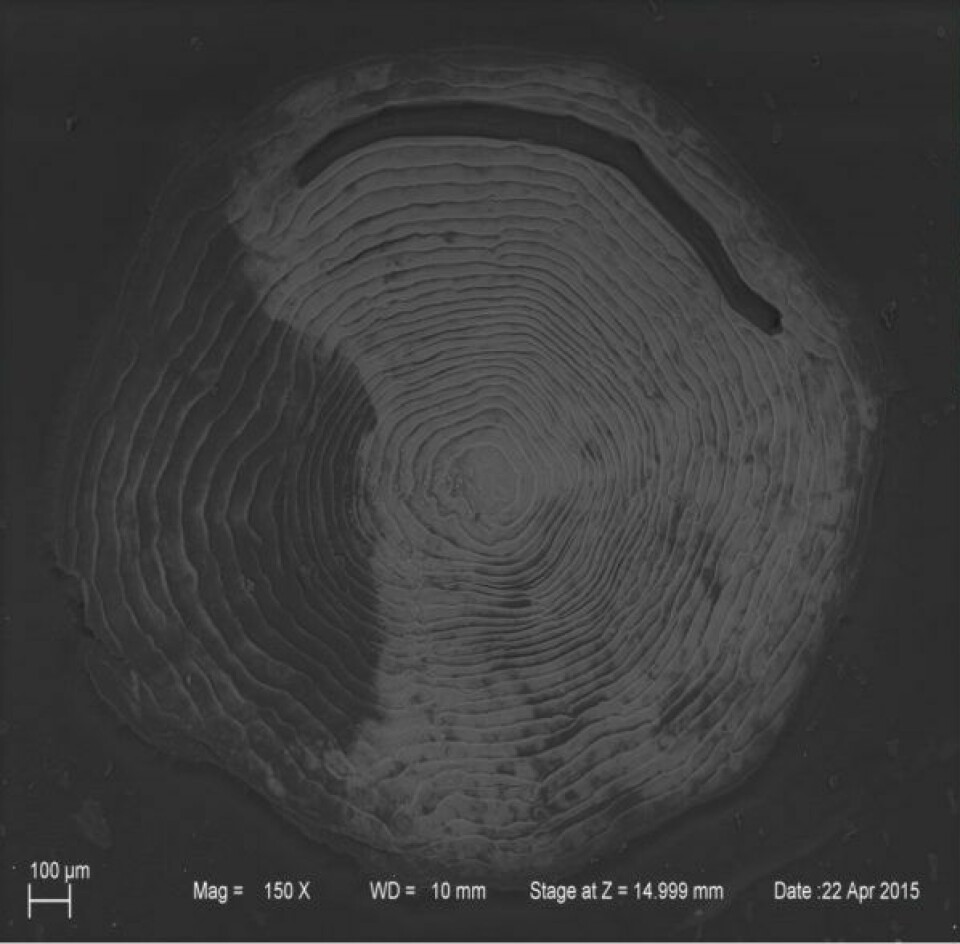
Scales help weigh up where escaped fish are from
A project to trace escaped farmed fish back to the owner by analysing elements in fish scales has been led by the Norwegian Veterinary Institute (VI), which now recommends a combination of methods for best tracking.
Researchers recently published a final report "FarmSalmTrack - Tracking based on elements in the fish's scales," where they have led a major industry-backed project to trace escaped farmed fish using scale analysis.
The main result of the investigations so far is that it's possible to distinguish between fish farms and between locations in the sea.
Scale acts as timeline
It has been shown that the incorporation of naturally-deposited elements into the scales reflects the environment that the fish lived in the relevant time, so that the scale acts as a timeline. This timeline can be used in several contexts:
- Analysis of the relationship between strontium and barium along a cross-section from the centre towards the edge of the scale can be used to determine the dark "year ring" (sclerite) that formed when the fish were transferred from fresh water into sea water. This analysis can also be used to distinguish between groups of fish.
- The freshwater profile is formed while the fish is in a fish farm. Freshwater profiles of 24 different groups from 18 fish farms located along the coast were separated from each other with a precision of 95.9 per cent. It is an important indicator of group affiliation, even after long periods of seawater.
- Seawater profiles of 17 groups after two months at sea gave an average classification accuracy of 74.2per cent (32.0-95.5 per cent).
- The seawater profile on the outer edge of the scale was in a test of an escape scenario to distinguish between two locations. 86 of 92 scales (93.5 per cent) were classified to the correct facility, 79 of the scales with more than 98 per cent probability.
The report's authors indicate that basic analyses of the scales provide information about the fish farms and locality, but have capacity challenges compared to DNA.

"The method, however, removes the need for logistics restrictions that DNA requires. A combination of the two methods can therefore constitute a complete tracking method," they say.
Precise and cost-effective tracking
On the basis of investigations carried out, they recommend that the tracking of farmed salmon is made by combining the DNA and elemental analyses of the fish scales.
"Reference material should be collected regularly throughout the production phase. In addition, a separate reference material should be collected for larger escapes. The solution provides precision, is cost-effective and will solve most of the escape situations," say the researchers.
To ensure optimal precision and avoid unnecessary additional analyses, using the solution requires that the industry has a complete overview of where fish with different DNA combinations are located.
In this context, they also recommend an annual budget of approximately NOK 15 million (£1.5m) for elemental analysis for Norway.
Full utilisation of analytical capacity
"This includes full utilisation of today's analytical capacity, necessary support and development of IT solutions, and control of collected material."
Assuming that around 350 million fish per year are put out, that gives a cost for elemental analysis in less than 5 cents per exposed fish, not including the construction costs of a sampling plant.
The VI writes that the project started in 2014 when SalMar, Marine Harvest and Leroy Seafood initiated a project with the aim to test and develop a tracking method based on naturally-deposited elements in fish scales.
"The project was implemented in cooperation with VESO, Norwegian Geological Survey (NGU) and the National Veterinary Institute (VI). The project was funded by the companies that have participated in the project, FHL Environmental Fund, Seafood Norway and FHF.
"New facilities have come in during the project period, and at the end of the project the scheme represented 65 per cent of annual smolt stocking in Norway. It has recorded samples from 56,680 fish spread over 1,028 submissions from 71 hatcheries and 157 fish farms.




















































